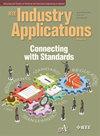Power Sharing Enhancement Strategies for Parallel-Connected Voltage Source Inverters With Common dc and ac Buses in Islanded Microgrids: Two New Control Schemes
IF 0.7
4区 工程技术
Q4 ENGINEERING, ELECTRICAL & ELECTRONIC
引用次数: 0
Abstract
Smaller rated modular converters are often connected in parallel, as opposed to the installation of a single converter with a high power rating. This is typically done to achieve a more reliable power supply with reduced cost. The work presented in this article is directed toward achieving proportional load power sharing between modular connected distributed generators (DGs) comprising inverters with common ac and dc buses in ac microgrids that are islanded. Two new schemes have been proposed to achieve this, and their performances have been compared with that of a recently proposed decentralized linear adaptive virtual impedance (AVI) variation strategy. The control schemes have been tested for a wide variety of loads and integrated seamlessly with the conventional and inverse droop control approaches for enhanced performance under varying network孤岛式微电网中并联电压源逆变器的功率共享增强策略:两种新的控制方案
额定功率较小的模块转换器通常并联在一起,而不是安装一个额定功率较大的转换器。这样做通常是为了以更低的成本实现更可靠的供电。本文介绍的工作旨在实现模块化连接的分布式发电机(DGs)之间的负载功率比例共享,这些模块化连接的分布式发电机(DGs)包括交流微电网中具有共同交流和直流母线的逆变器。为此提出了两种新方案,并将其性能与最近提出的分散线性自适应虚拟阻抗 (AVI) 变化策略进行了比较。这些控制方案针对各种负载进行了测试,并与传统和反向下垂控制方法进行了无缝集成,以提高在变化的网络 $text{X}/\text{R}$ 参数下的性能。通过在 MATLAB/Simulink 上进行离线仿真,这些新策略还在带三个风电机组的改进型 13 总线系统上得到了验证。此外,还针对网格网络条件、不同负载、不同 DG 功率等级和下垂控制器配置,使用控制器-硬件-在环(CHIL)设置进行了验证。
本文章由计算机程序翻译,如有差异,请以英文原文为准。
求助全文
约1分钟内获得全文
求助全文
来源期刊

IEEE Industry Applications Magazine
工程技术-工程:电子与电气
CiteScore
1.60
自引率
0.00%
发文量
133
审稿时长
>12 weeks
期刊介绍:
The IEEE Industry Applications Magazine publishes articles concerning technical subjects and professional activities that are within the Scope of the IEEE Industry Applications Society (IAS) and are of interest to society members. The information includes but is not limited to articles, product reviews, book reviews, new standards, education information, announcements of conferences, workshops, new publications, committee meetings, and reports of lASactivities. The Magazine communicates Executive Board actions to IAS members as required by the IAS Constitution and By-Laws.
 求助内容:
求助内容: 应助结果提醒方式:
应助结果提醒方式:


